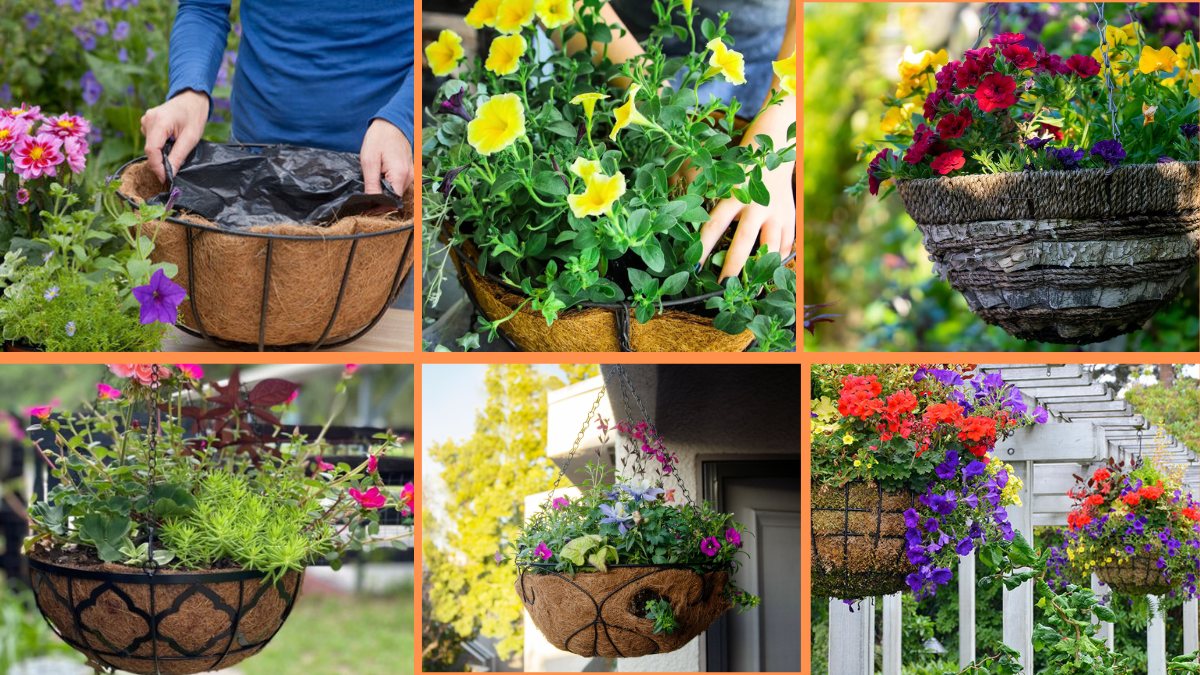Nothing brightens up a porch, balcony, or patio quite like a vibrant hanging basket filled with cascading flowers. These floating gardens bring color, texture, and movement to outdoor spaces while making the most of vertical space. Whether you’re a seasoned gardener or a complete beginner, growing healthy, lush hanging baskets is surprisingly simple — when you know the right techniques.
In this article, we’ll share 10 expert tips to grow hanging basket flowers successfully, from selecting the best plants to keeping them thriving all season long. Ready to transform your outdoor space into a floral paradise? Let’s get started!
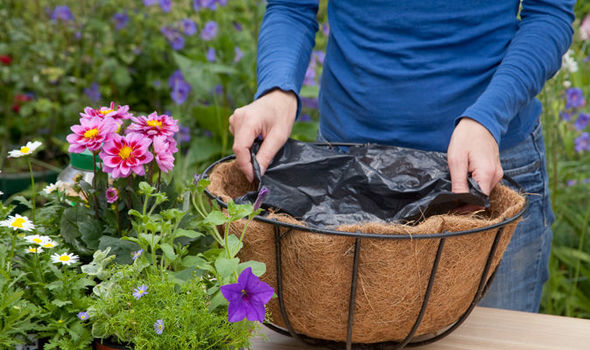
Why Choose Hanging Basket Flowers?
Hanging baskets are an excellent way to add instant charm and color to any space. Perfect for small patios, apartment balconies, front porches, or pergolas, they also make fantastic vertical accents in larger gardens.
Benefits of hanging basket flowers:
- Create colorful focal points at eye level.
- Maximize vertical gardening space.
- Easily moveable for sun or shade requirements.
- Perfect for renters or those with limited ground space.
- Can be customized seasonally or thematically.
With the right care, hanging baskets can bloom beautifully from early spring to late fall.
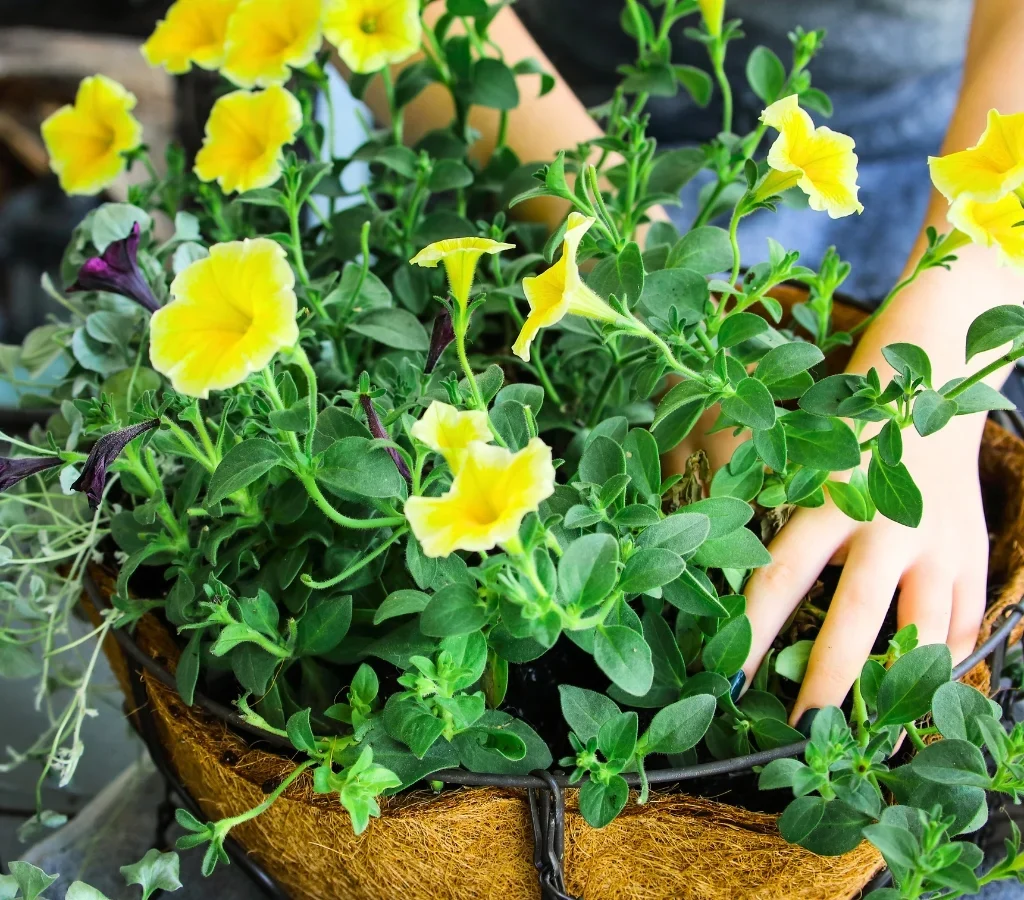
10 Tips to Grow Hanging Basket Flowers Beautifully
1. Pick the Right Basket Size and Style
The size and material of your hanging basket greatly influence how well your flowers will grow. Larger baskets hold more soil, retain moisture longer, and support fuller plantings.
Tips:
- Choose baskets 12-16 inches in diameter for mixed flower arrangements.
- Use baskets with coco coir, moss, or wire linings for excellent drainage.
- Plastic baskets hold moisture better in hot, dry climates.
- Hanging wall planters and tiered baskets are fun, space-saving options too.

2. Select Suitable Flower Varieties for Hanging
Not all flowers thrive in hanging baskets. Look for trailing, cascading, or mounding plants that spill over the sides gracefully.
Top hanging basket flowers:
- Petunias – abundant blooms, endless color options.
- Fuchsias – perfect for partial shade with dangling, bell-shaped flowers.
- Lobelia – delicate blue, purple, or white blooms.
- Calibrachoa (Million Bells) – small, colorful petunia-like flowers.
- Bacopa – dainty white or purple flowers with trailing stems.
- Verbena – bright clusters of flowers on trailing foliage.
- Ivy Geraniums – heat-tolerant, with a cascading growth habit.
Pro tip: Mix different bloom shapes, textures, and complementary colors for a dynamic display.

3. Use High-Quality Potting Mix
Hanging baskets require a light, well-draining, moisture-retentive potting mix — not garden soil, which is too heavy and compacts easily.
Potting mix essentials:
- Choose a commercial potting mix for containers or hanging baskets.
- Look for mixes enriched with perlite, vermiculite, or coconut coir for aeration.
- Consider adding a small amount of slow-release fertilizer granules for continuous feeding.
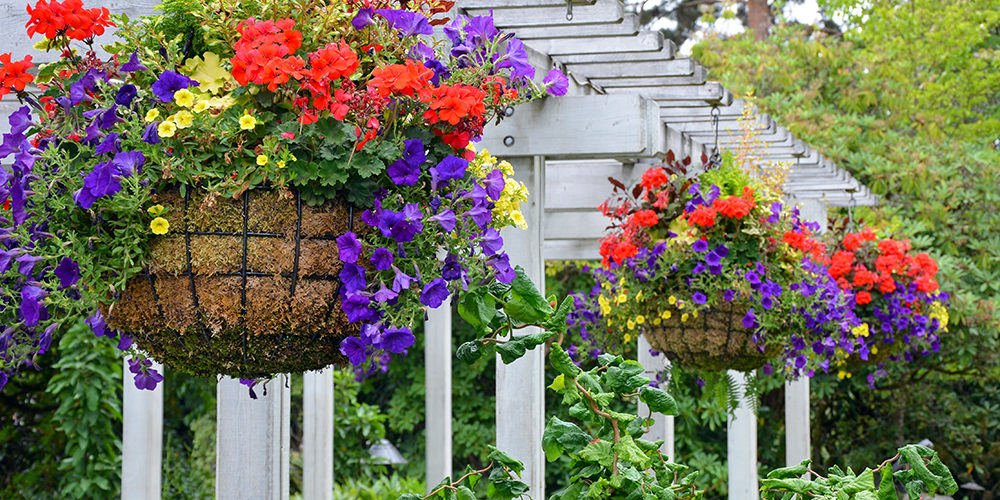
4. Plant Strategically for Full, Balanced Growth
To create a lush, overflowing basket, arrange plants based on their growth habits.
Planting tips:
- Position tall or upright plants (like geraniums) in the center.
- Add trailing varieties (like petunias, bacopa, or lobelia) around the edges.
- Place mounding plants (like calibrachoa) to fill gaps in between.
- Gently loosen plant roots before planting to encourage better establishment.
Pro tip: Slightly overplant hanging baskets for a fuller, more dramatic effect.
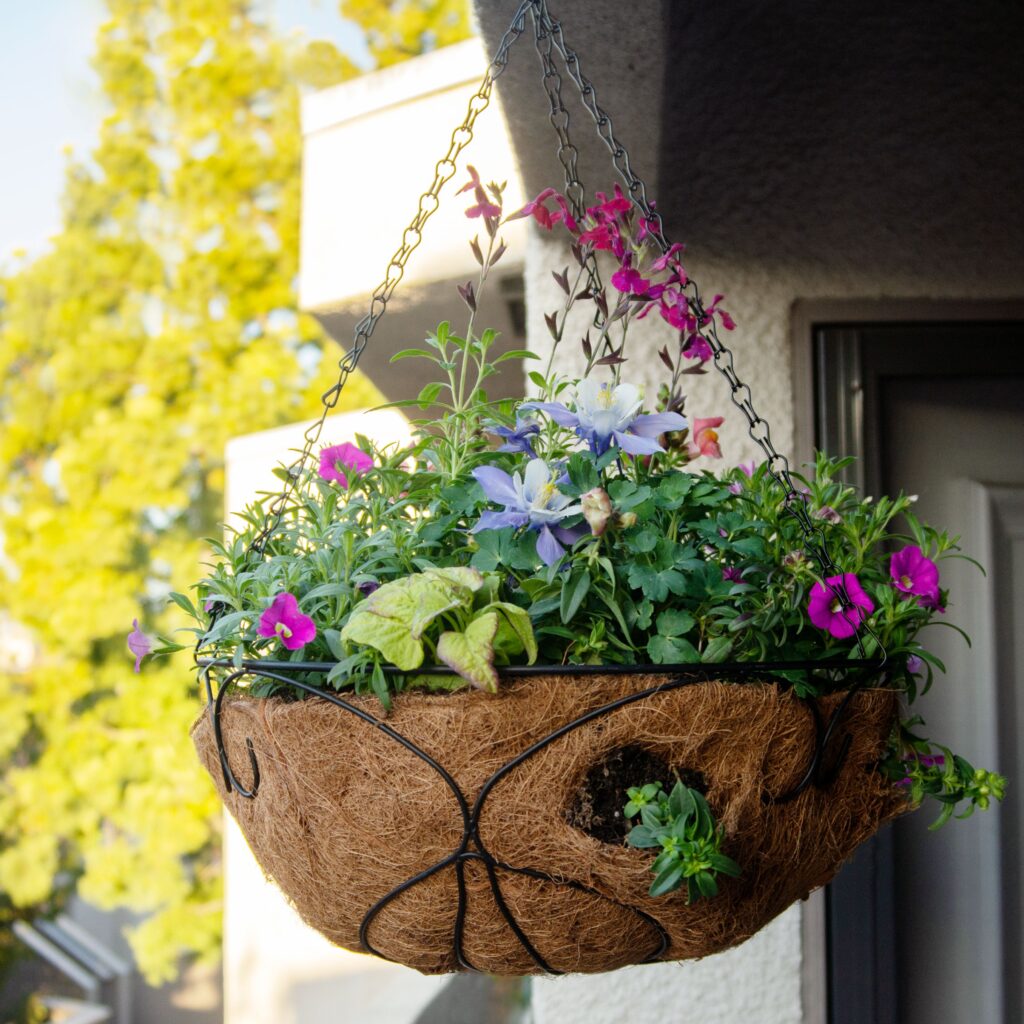
5. Water Consistently and Generously
Hanging baskets dry out much faster than in-ground gardens, especially in hot, windy, or sunny spots. Consistent watering is crucial.
Watering tips:
- Check moisture daily, especially in summer.
- Water thoroughly until it drips from the bottom.
- In hot weather, baskets may need watering once or twice daily.
- Use a long-neck watering can or hose attachment for easier access.
Pro tip: Add a water-retaining gel to your soil mix to reduce drying out.
6. Feed Regularly for Continuous Blooms
Because hanging baskets are watered frequently, nutrients leach out of the soil quickly. Regular feeding keeps your flowers healthy and blooming.
Feeding tips:
- Apply a liquid fertilizer (balanced or flower-boosting) every 1-2 weeks.
- Choose fertilizers with higher phosphorus (middle number) to encourage blooming.
- Supplement with a slow-release fertilizer at planting time.
7. Prune, Deadhead, and Pinch Back
To keep baskets looking tidy and encourage constant flowering, practice regular maintenance.
Maintenance tips:
- Deadhead spent blooms (remove faded flowers) to promote new ones.
- Trim straggly or leggy stems to maintain a balanced shape.
- Pinch back tips of certain plants like petunias and verbena to encourage bushier growth.
Pro tip: Regular grooming prevents plants from becoming overgrown or sparse.
8. Position Baskets for Optimal Light Conditions
Different flowers thrive in varying light conditions, so match your plant selection to your hanging basket’s location.
Light requirement guide:
- Full sun (6+ hours): Petunias, calibrachoa, verbena.
- Partial shade (3-5 hours): Fuchsias, impatiens, begonias.
- Shade: Certain lobelias, bacopa, and trailing ivy.
Pro tip: Rotate baskets occasionally to ensure even sun exposure and balanced growth.
9. Protect Baskets from Wind and Extreme Heat
Hanging baskets are more exposed to the elements. Wind and excessive heat can damage delicate flowers and dry out soil rapidly.
Protection tips:
- Position baskets under eaves, awnings, or pergolas for partial shelter.
- Use wind-resistant flowers like geraniums or calibrachoa in breezy spots.
- Move baskets to shaded areas during extreme heatwaves.
- Consider using a drip irrigation system for multiple baskets in hot climates.
10. Refresh, Replant, or Rotate Seasonally
Hanging baskets aren’t just for summer — you can update them with new flowers and colors as seasons change.
Seasonal refresh ideas:
- In fall, swap summer blooms for chrysanthemums, ornamental kale, and pansies.
- In winter (if mild), opt for evergreens, ivy, and winter pansies.
- In early spring, fill baskets with primroses, violas, and early blooming bulbs.
Pro tip: Between seasons, replenish soil, add fresh fertilizer, and prune existing plants before replanting.
Final Thoughts: Elevate Your Outdoor Space with Hanging Baskets
Growing hanging basket flowers is a simple, satisfying way to add vibrant color, texture, and life to patios, balconies, porches, or gardens. With the right plant choices, soil, light, and care routine, you can enjoy lush, cascading baskets bursting with blooms from early spring to late fall.
Recap of the 10 Tips:
- Choose the right basket size and material.
- Pick suitable flower varieties for hanging.
- Use quality, lightweight potting mix.
- Plant strategically for shape and fullness.
- Water generously and consistently.
- Feed regularly for ongoing blooms.
- Deadhead, prune, and pinch for tidiness.
- Position baskets to match light needs.
- Protect from wind and harsh heat.
- Refresh and replant seasonally.
With a little creativity and regular care, your hanging baskets can become the crowning jewels of your outdoor sanctuary!
Would you like a catchy title variation, SEO-friendly meta description, or social media caption ideas to go with this article? I’d be happy to craft those for you too!
4o
